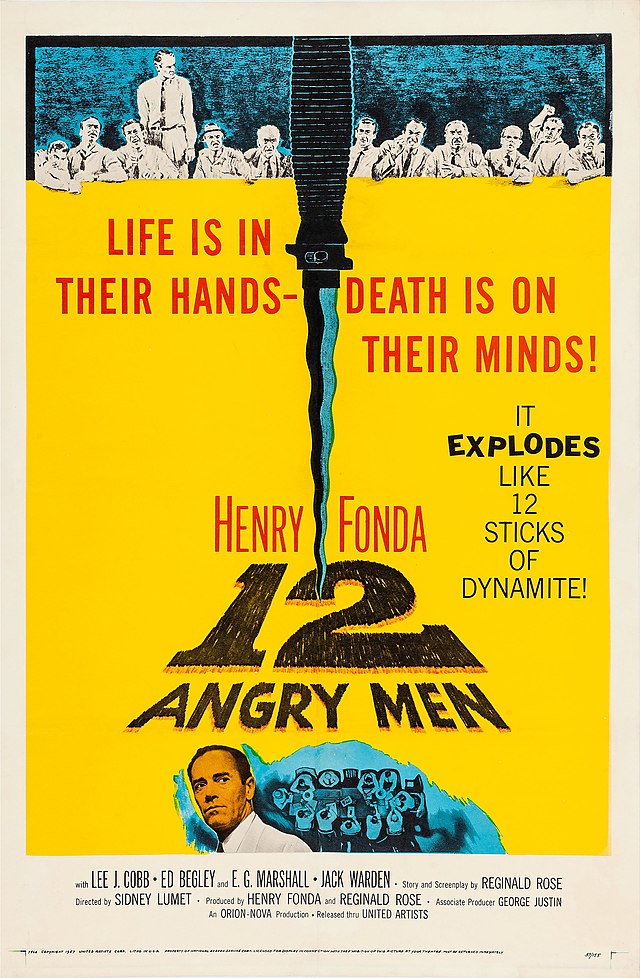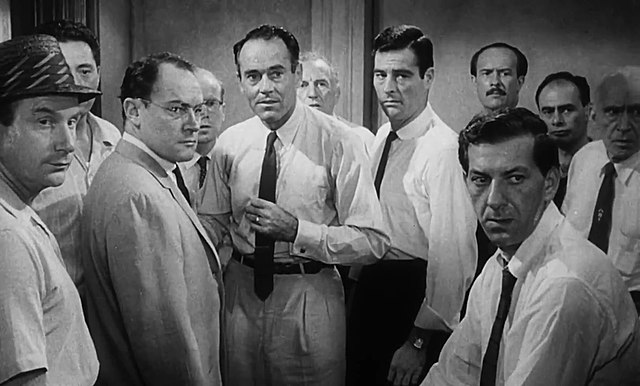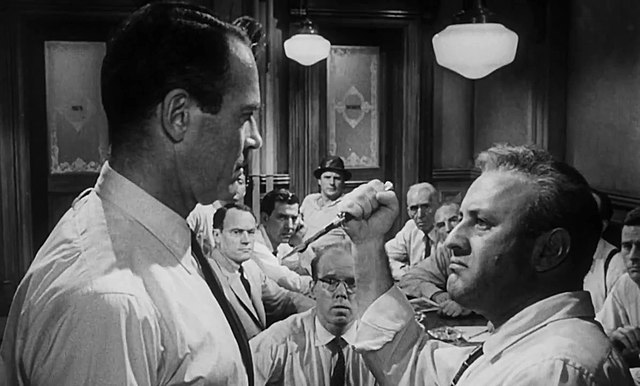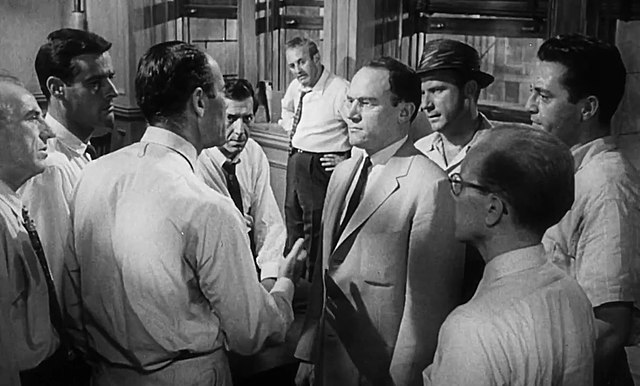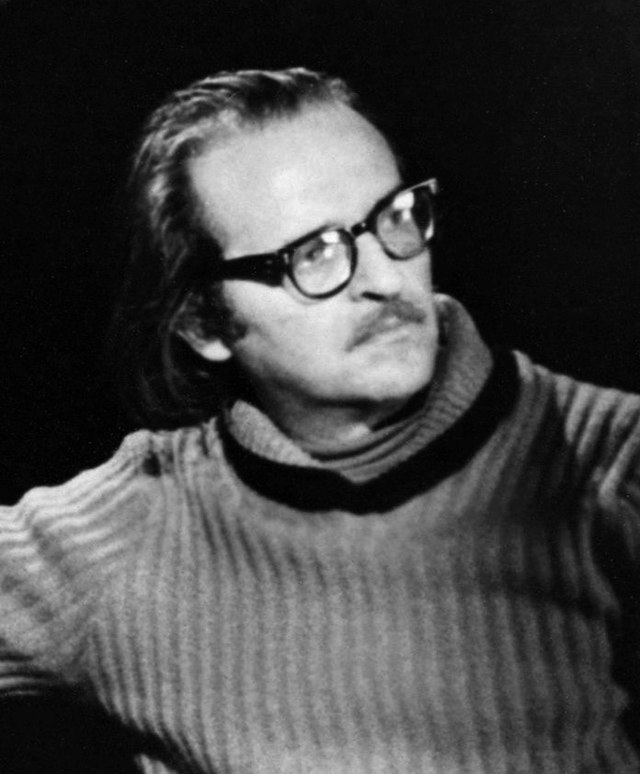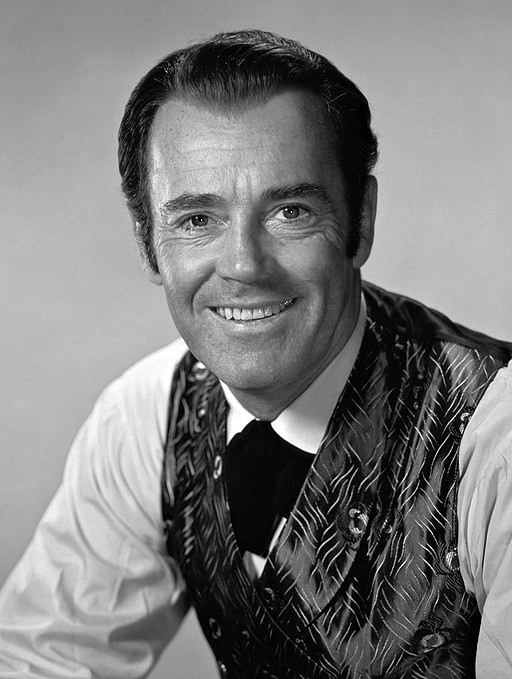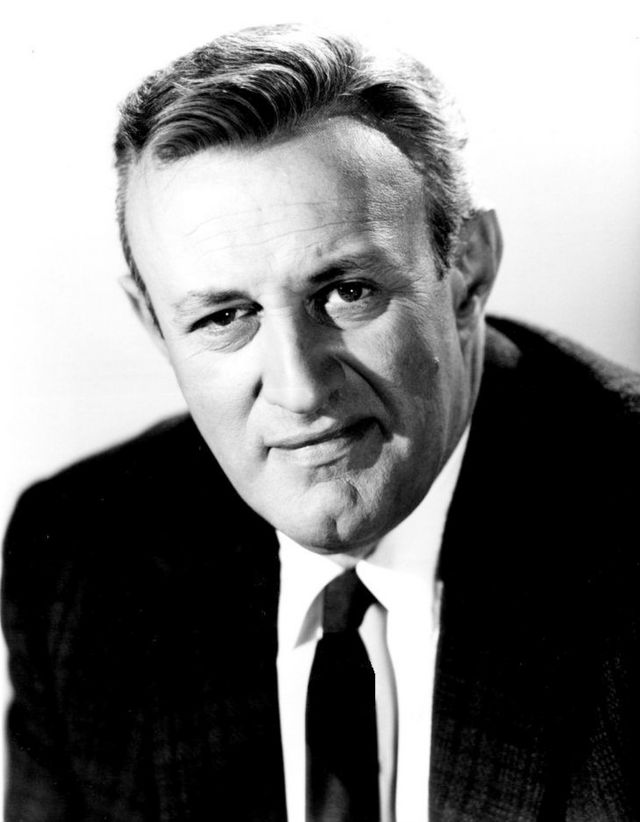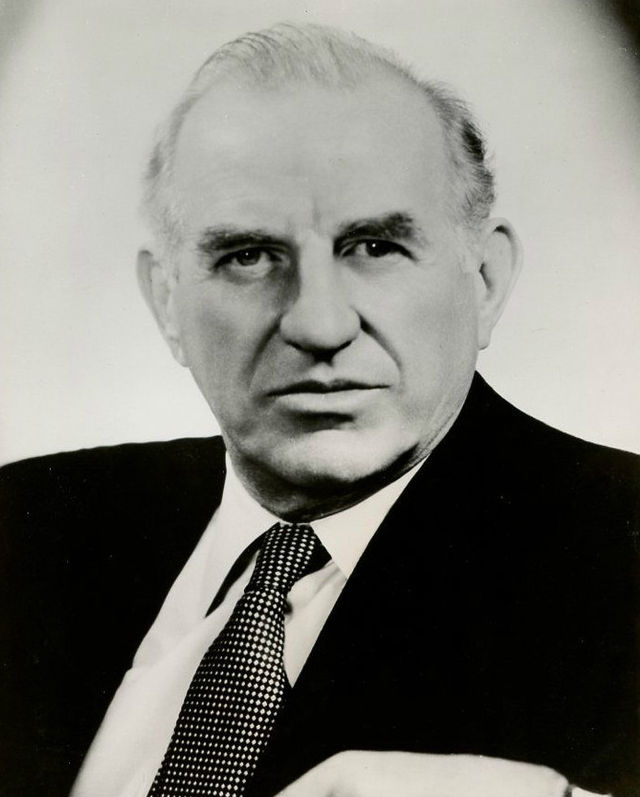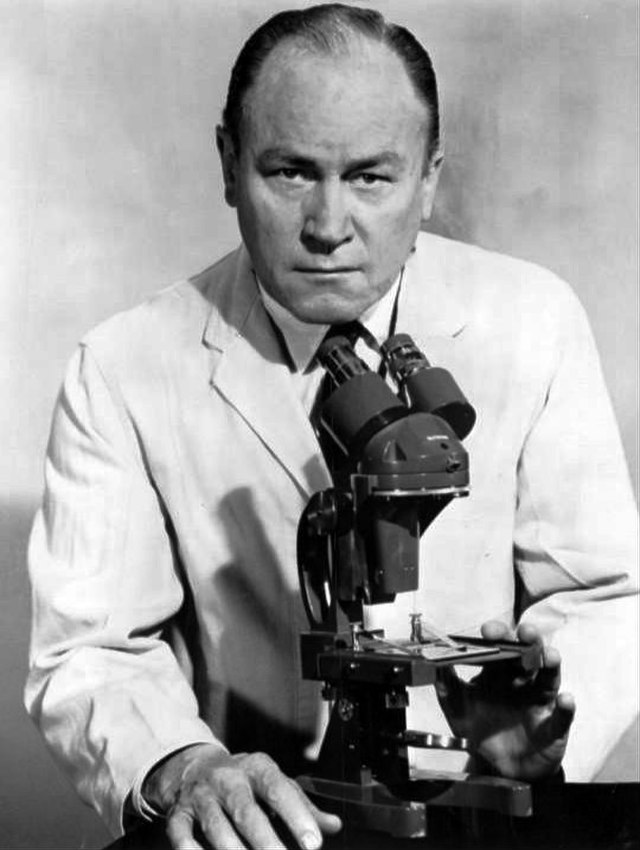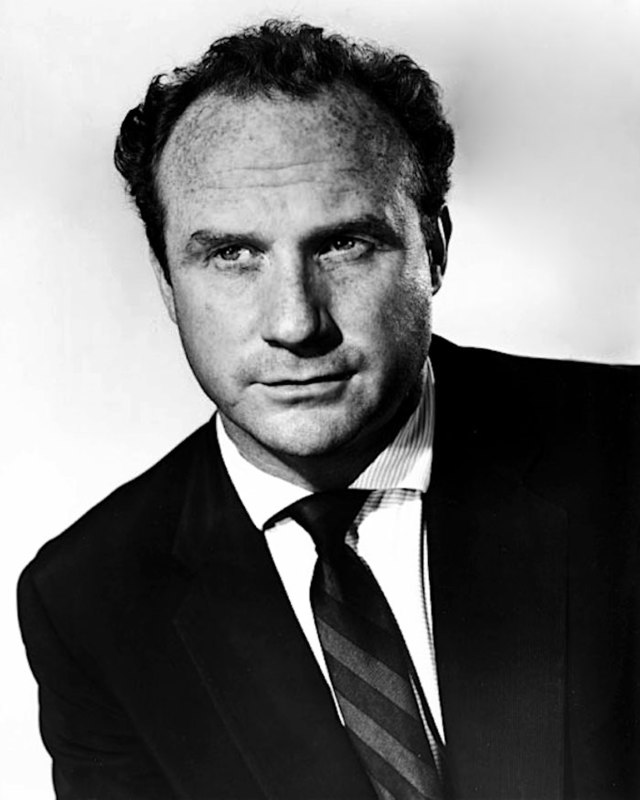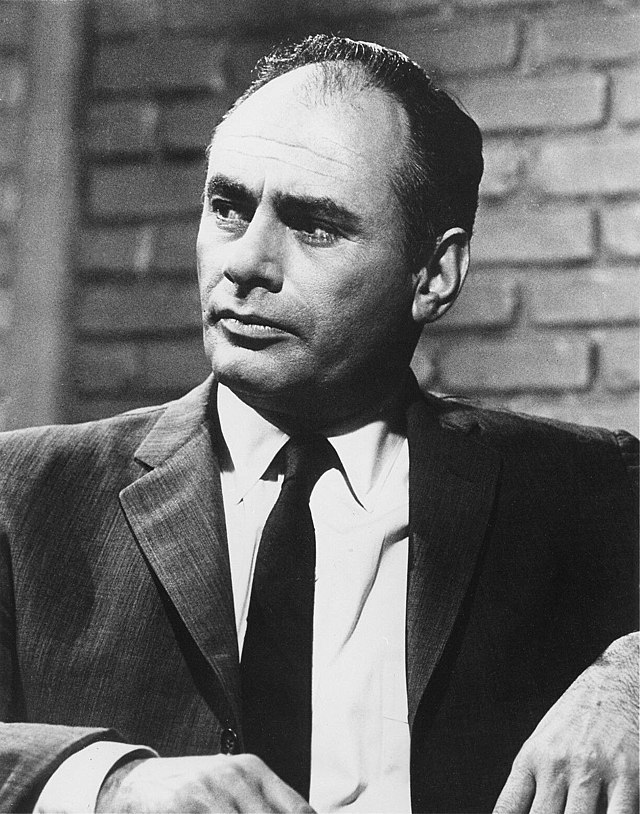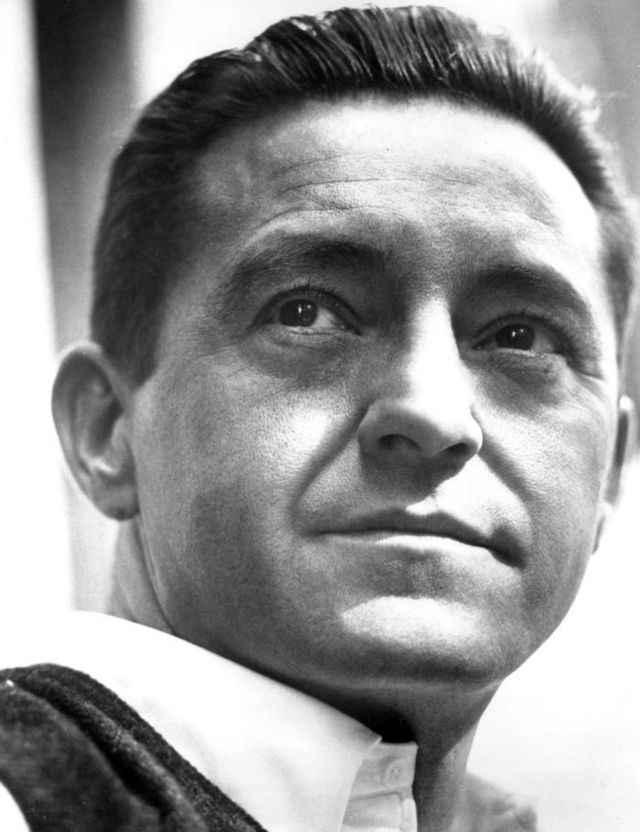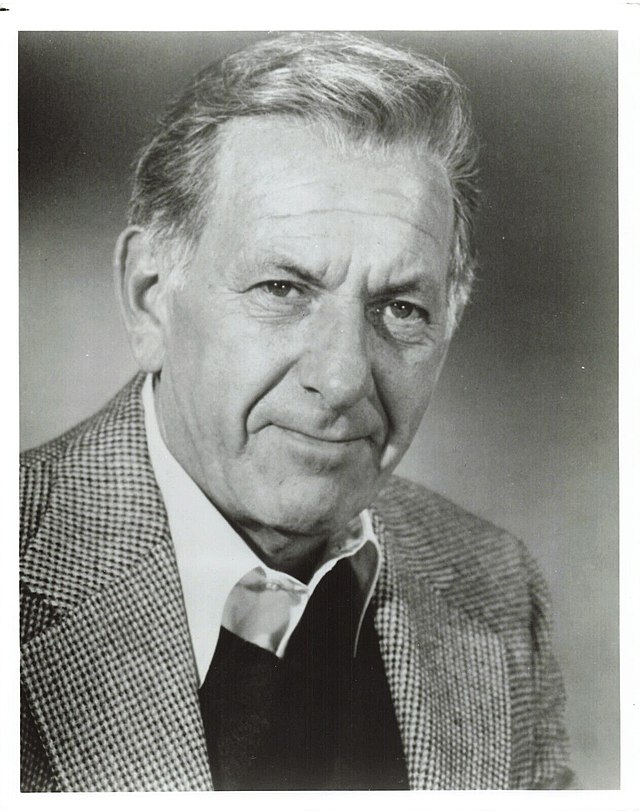Summary of 12 Angry Men (1957)
Introduction
Sidney Lumet’s 12 Angry Men is a tense, character-driven courtroom drama set almost entirely within the confines of a jury deliberation room. The film follows a jury of twelve men tasked with determining the fate of a teenage boy accused of murdering his father. If found guilty, the boy will face the death penalty. At the start, the case appears open-and-shut, with the prosecution presenting a compelling argument backed by eyewitness testimony and forensic evidence. However, as the jury deliberates, personal biases, prejudices, and logical reasoning clash in a gripping exploration of justice and human nature.
________________________________________
Plot Summary
The film begins with the judge giving final instructions to the jurors, reminding them that their verdict must be unanimous and based on the principle of "beyond a reasonable doubt." The twelve men then enter a small, stuffy deliberation room to discuss the case.
As they take an initial vote, eleven jurors vote guilty, while only one, Juror 8 (Henry Fonda), votes not guilty. His reason is not that he believes the defendant is innocent, but that he feels the case should be discussed before condemning the young man to death. This sets off an intense and often hostile debate.
Raising Doubts
Juror 8 methodically breaks down the prosecution’s arguments. He questions the reliability of the two key witnesses: an elderly man who claimed to hear the murder from his apartment below and a woman who swore she saw the killing through the windows of a passing train. He also challenges the forensic evidence, particularly the supposed uniqueness of the murder weapon—a switchblade knife—which he dramatically reveals is not unique at all by pulling out an identical one he purchased from a local store.
As the discussion progresses, other jurors begin to reconsider their stance. Juror 9, an older man, changes his vote after reflecting on the inconsistencies in the elderly witness’s testimony. Juror 5, who grew up in a rough neighborhood, doubts that the accused, an experienced knife fighter, would have stabbed his father in the way described in court.
Conflict and Prejudice
The film masterfully captures the psychological and emotional dynamics of a jury room. Each juror represents different facets of society, with varying degrees of rationality and personal prejudice. Juror 3 (Lee J. Cobb) emerges as the most vocal advocate for a guilty verdict, driven by his own unresolved issues with his estranged son. Juror 10 (Ed Begley) frequently expresses blatant bigotry, assuming the boy’s guilt based solely on his background.
On the other hand, Juror 4 (E.G. Marshall), a calm and analytical man, bases his stance purely on logic and evidence. It is only when the reliability of the woman’s testimony is questioned—due to the fact that she likely wasn't wearing her glasses at the time—that he concedes reasonable doubt.
Breaking the Deadlock
Gradually, more jurors change their votes, and the balance shifts. Even the most stubborn ones—such as Juror 10, whose racist rant causes the other jurors to turn their backs on him in silent condemnation—begin to waver. The final holdout is Juror 3, whose deep-seated personal anger blinds him to reason. In a moment of emotional catharsis, he breaks down, tearing up a picture of his son before reluctantly changing his vote to not guilty.
The film ends as the jurors leave the courthouse, each changed in some way by the deliberation. Juror 8 and Juror 9 exchange a brief but respectful farewell, and the young defendant’s fate is left unknown to the audience.
________________________________________
Analysis
Themes
Justice and the Power of Reason
At its core, 12 Angry Men is a celebration of rational thought and moral responsibility. Juror 8 embodies the ideal citizen—someone who upholds justice by refusing to let biases or assumptions dictate a verdict. The film suggests that the judicial system is only as strong as the integrity of those who participate in it.
The Fragility of Truth
Throughout the film, what initially appears to be an airtight case gradually unravels as the jurors apply scrutiny. Lumet uses this to critique the dangers of blind certainty and the necessity of critical thinking in matters of justice.
Prejudice and Personal Bias
The jury room becomes a microcosm of society, where class, racial prejudice, and personal experiences shape perceptions of guilt and innocence. Juror 10, in particular, embodies deep-seated racism, while Juror 3 lets his personal baggage cloud his judgment. The film exposes how these biases can lead to unjust outcomes.
The Importance of Dissent
Juror 8's willingness to stand alone against the majority reflects the power of a single individual to instigate change. The film upholds the idea that progress often begins with one person daring to challenge the status quo.
________________________________________
Cinematography and Directing
Sidney Lumet’s direction amplifies the film’s intensity through visual storytelling:
• Claustrophobic Setting: The film is almost entirely set in a single room, heightening the tension and forcing the audience to focus on the characters' interactions.
• Camera Techniques: As the film progresses, the camera moves from wide shots to increasingly tighter close-ups, emphasizing the pressure and emotional strain on the jurors.
• Lighting: The use of naturalistic lighting shifts subtly as the film progresses—early scenes are brightly lit, but shadows deepen as the tension escalates, mirroring the characters' psychological turmoil.
________________________________________
Impact and Legacy
Despite a modest box office performance upon release, 12 Angry Men has since been recognized as one of the greatest courtroom dramas of all time. It has influenced countless legal dramas and is frequently studied in law schools for its portrayal of jury deliberations. The film’s themes remain relevant, serving as a powerful reminder of the importance of due process, logical reasoning, and standing up for justice.
Sidney Lumet’s directorial debut showcased his talent for socially conscious storytelling, setting the stage for his later masterpieces. The film also reinforced Henry Fonda’s legacy as one of Hollywood’s greatest actors, with his portrayal of Juror 8 standing as an enduring symbol of moral courage.
________________________________________
Conclusion
12 Angry Men is a masterclass in filmmaking, using minimal settings and a strong script to create a gripping psychological drama. It serves as both an indictment of human prejudice and a tribute to the power of reasoned discourse. With its compelling characters, sharp dialogue, and powerful themes, the film remains as relevant today as it was in 1957, proving that justice must never be taken for granted.
Full Cast
Jurors:
• Juror 1 (Foreman): Martin Balsam
• Juror 2: John Fiedler
• Juror 3: Lee J. Cobb
• Juror 4: E.G. Marshall
• Juror 5: Jack Klugman
• Juror 6: Edward Binns
• Juror 7: Jack Warden
• Juror 8: Henry Fonda
• Juror 9: Joseph Sweeney
• Juror 10: Ed Begley
• Juror 11: George Voskovec
• Juror 12: Robert Webber
Additional Cast:
• Judge: Rudy Bond (uncredited)
• Stenographer: Tom Gorman (uncredited)
• Guard: James Kelly (uncredited)
• Court Clerk: Billy Nelson (uncredited)
• The Accused: John Savoca (uncredited)
• Man Waiting for Elevator: Walter Stocker (uncredited)
Jurors Character Breakdown
Juror 1 (The Foreman) – Martin Balsam
Role: The leader of the jury, responsible for maintaining order.
Personality: Fair, but somewhat passive. He tries to keep discussions organized but lacks strong leadership.
Significance: Represents procedural order and the challenges of leading a group with strong personalities.
________________________________________
Juror 2 – John Fiedler
Role: A timid and soft-spoken bank clerk.
Personality: Easily influenced, nervous, and hesitant to voice his opinions.
Significance: Represents the everyday person who struggles to assert themselves but is capable of independent thought when encouraged.
________________________________________
Juror 3 – Lee J. Cobb
Role: The most aggressive advocate for a guilty verdict.
Personality: Short-tempered, stubborn, and deeply emotional, particularly due to his estranged relationship with his own son.
Significance: Embodies personal bias and the inability to separate emotions from logic. His eventual breakdown is a powerful moment of self-realization.
________________________________________
Juror 4 – E.G. Marshall
Role: A logical, analytical stockbroker.
Personality: Rational, unemotional, and confident in facts over emotions.
Significance: Initially a strong guilty voter, but once logical doubt is introduced (the eyewitness wearing glasses), he concedes. He represents the importance of critical thinking.
________________________________________
Juror 5 – Jack Klugman
Role: A young man from a poor background.
Personality: Quiet, sensitive, and defensive about his upbringing.
Significance: His experience with knife fights allows him to challenge the prosecution’s claim about the murder weapon, adding crucial insight.
________________________________________
Juror 6 – Edward Binns
Role: A blue-collar worker who values fairness.
Personality: Honest, decent, and slow to form opinions.
Significance: Represents the working-class individual who takes his civic duty seriously and carefully considers the arguments presented.
________________________________________
Juror 7 – Jack Warden
Role: A salesman eager to leave and attend a baseball game.
Personality: Indifferent, impatient, and more concerned with his own convenience than justice.
Significance: A symbol of apathy in the judicial system, he ultimately changes his vote just to end the deliberation.
________________________________________
Juror 8 – Henry Fonda
Role: The only initial not guilty voter, advocating for discussion.
Personality: Calm, rational, empathetic, and persistent.
Significance: The moral center of the film, he exemplifies the importance of reasonable doubt and standing up for justice.
________________________________________
Juror 9 – Joseph Sweeney
Role: The oldest juror, a wise and observant man.
Personality: Thoughtful, perceptive, and supportive of fairness.
Significance: First to support Juror 8, offering key insights, such as noticing the eyeglasses marks on the eyewitness.
________________________________________
Juror 10 – Ed Begley
Role: A loud and bigoted man who is openly prejudiced against the defendant’s background.
Personality: Intolerant, mean-spirited, and dismissive of facts.
Significance: His racist rant isolates him, highlighting the theme of prejudice in the justice system.
________________________________________
Juror 11 – George Voskovec
Role: An immigrant watchmaker who values democracy and justice.
Personality: Humble, polite, and deeply appreciative of the American legal system.
Significance: Represents fairness and the immigrant perspective, valuing the legal process more than many native-born jurors.
________________________________________
Juror 12 – Robert Webber
Role: An advertising executive who is indecisive.
Personality: Superficial, distracted, and easily swayed by others.
Significance: A representation of people who approach serious issues with detachment, changing opinions based on social influence rather than deep conviction.
________________________________________
Conclusion
Each juror represents a different perspective on justice, bias, and critical thinking. As the deliberation unfolds, their interactions reveal the complexities of human nature and the importance of thorough, unbiased decision-making in the judicial system.
How Did Each Juror Act in 12 Angry Men?
________________________________________
How Did Juror 1 (The Foreman) Act?
At the start, Juror 1 takes his role as foreman seriously, trying to keep the discussion orderly but without asserting strong opinions. He is more of a facilitator than a decision-maker. As the deliberation progresses, he listens attentively to the arguments and eventually changes his vote to not guilty as doubt builds.
________________________________________
How Did Juror 2 Act?
Juror 2 starts as nervous, hesitant, and easily influenced. Initially voting guilty, he doesn’t contribute much to the discussion but slowly gains confidence. He is swayed by logical arguments, particularly regarding the murder weapon and the eyewitness testimony, and eventually votes not guilty.
________________________________________
How Did Juror 3 Act?
Juror 3 is the most aggressive and emotional, insisting on a guilty verdict due to personal resentment toward his estranged son. He lashes out at others, refuses to accept reasonable doubt, and is the last holdout. In the end, after an emotional breakdown, he acknowledges his bias and reluctantly votes not guilty.
________________________________________
How Did Juror 4 Act?
Juror 4 is logical and relies solely on facts. He believes in the prosecution’s case but remains open to reasoning. He only changes his vote when the eyewitness testimony is proven unreliable due to the woman likely not wearing her glasses at the time. He ultimately concedes to reasonable doubt.
________________________________________
How Did Juror 5 Act?
Juror 5, coming from a rough neighborhood, is initially quiet but starts speaking up when he realizes his background gives him unique insight. His knowledge of knife fights helps debunk the claim that the defendant stabbed his father in an unrealistic manner. This moment is crucial in shifting opinions toward not guilty.
________________________________________
How Did Juror 6 Act?
Juror 6 is a working-class man who is respectful and fair. He takes time to process information and doesn’t rush to judgment. He becomes convinced of reasonable doubt as more inconsistencies in the case are revealed and ultimately votes not guilty.
________________________________________
How Did Juror 7 Act?
Juror 7 is impatient, dismissive, and primarily concerned about getting to his baseball game. He votes guilty at first, not out of conviction but out of convenience. As the majority shifts to not guilty, he reluctantly changes his vote, showing his lack of real engagement with the case.
________________________________________
How Did Juror 8 Act?
Juror 8 is the lone dissenter at the start, advocating for discussion rather than a quick verdict. He methodically introduces reasonable doubt, challenging assumptions about the case. His persistence and calm reasoning sway the other jurors, proving the importance of critical thinking and moral courage.
________________________________________
How Did Juror 9 Act?
Juror 9, the oldest juror, is observant and wise. He is the first to support Juror 8, recognizing the need for discussion. His key observation about the witness’s glasses helps dismantle the prosecution’s case, leading to a pivotal turning point in the deliberation.
________________________________________
How Did Juror 10 Act?
Juror 10 is openly prejudiced and dismisses the defendant based on his background rather than evidence. As the discussion progresses, his bigotry isolates him, culminating in a powerful moment where the other jurors silently turn their backs on him. He eventually gives in and changes his vote.
________________________________________
How Did Juror 11 Act?
Juror 11, an immigrant, deeply respects the justice system and values fair deliberation. He is thoughtful and methodical, questioning inconsistencies in the prosecution’s case. His respect for due process makes him one of the more reasonable and open-minded jurors.
________________________________________
How Did Juror 12 Act?
Juror 12 is indecisive, superficial, and more concerned with appearing intelligent than engaging in serious debate. He flip-flops between votes multiple times, easily swayed by the arguments of stronger personalities. Eventually, he settles on not guilty after seeing the growing consensus.
________________________________________
Final Verdict
By the end of the deliberation, all twelve jurors vote not guilty, showing the transformation from a quick, emotionally driven judgment to a thorough and fair consideration of reasonable doubt.
Classic Trailer 12 Angry Men
Analysis of Sidney Lumet’s Direction
Sidney Lumet’s direction in 12 Angry Men is a masterclass in tension-building, visual storytelling, and character-driven drama. With his debut feature, Lumet crafted an intimate yet gripping film that transcends its simple setting, transforming a jury room into an intense psychological battleground. His choices in cinematography, camera movement, lighting, and pacing elevate the film’s themes of justice, morality, and human bias, making 12 Angry Men not just a compelling courtroom drama but also a timeless study of human nature.
________________________________________
The Power of Minimalism: A Single Room, Maximum Tension
One of Lumet’s most striking achievements is his ability to make a single location feel dynamic and ever-changing. The entire film takes place inside a small, windowless jury room (except for brief moments in the courthouse hallway and washroom), yet the film never feels stagnant. Instead of relying on large-scale movement or dramatic action, Lumet uses subtle but deliberate techniques to shift the emotional landscape.
• The jury room itself becomes an extension of the story’s tension. As the deliberation progresses, the room appears to shrink—adding to the sense of claustrophobia and pressure felt by the jurors.
• The use of real-time storytelling heightens the immersion. The audience experiences the film as if they are trapped in the room with the jurors, witnessing their transformation unfold in real time.
This approach forces the audience to focus on the psychological conflicts, making every glance, hesitation, and outburst feel magnified.
________________________________________
Camera Work: A Gradual Shift in Perspective
Lumet’s cinematographic choices subtly guide the viewer’s emotional engagement. He deliberately alters camera angles and focal lengths to reflect the growing intensity of the deliberations.
• From Wide Shots to Close-Ups: At the beginning of the film, Lumet primarily employs wide shots and medium frames to establish a sense of neutrality. As the debate escalates and jurors become more entrenched in their positions, he gradually moves to tighter close-ups, emphasizing the tension, sweat, and frustration on their faces.
• Low Angles to Increase Intensity: Lumet initially shoots from a higher angle, making the jurors appear smaller within the space. As the tension mounts and the stakes become clearer, he progressively lowers the camera angle, making the characters seem larger and more imposing. By the climax, the shots are from below, heightening the drama and emphasizing the emotional weight of the final votes.
• Long Takes and Fluid Movement: The use of long takes, particularly during heated arguments, immerses the viewer in the moment, making conversations feel natural and spontaneous. Lumet allows the actors to dominate the frame, reinforcing the idea that their words and emotions drive the story rather than external action.
This careful manipulation of perspective ensures that the viewer’s engagement grows alongside the intensity of the deliberation, making the film’s confined setting feel increasingly oppressive.
________________________________________
Lighting: From Bright and Open to Dark and Oppressive
Lighting plays a crucial role in 12 Angry Men, subtly reinforcing the characters’ shifting moods and perspectives.
• Bright Beginnings: In the opening moments, the jury room is well-lit, reflecting the jurors' initial confidence in their assumptions about the case. Their expressions are clearly visible, suggesting an illusion of certainty and clarity.
• Gradual Darkening: As doubt creeps in and the debate intensifies, the lighting shifts. Shadows become more pronounced, creating a more dramatic, almost noir-like aesthetic. This mirrors the growing complexity of the case and the moral struggles each juror faces.
• A Moment of Relief: As the film nears its conclusion and the storm outside clears, light returns to the room, symbolizing enlightenment, justice, and a return to reason. The final wide shot of Juror 8 and Juror 9 leaving the courthouse is bathed in natural light, a stark contrast to the shadowy intensity of the jury room.
Lumet’s use of lighting creates a subconscious shift in the audience’s perception, reinforcing the film’s evolving emotional tone without relying on overt exposition.
________________________________________
The Pacing: A Perfectly Constructed Slow Burn
Despite the film’s limited setting and dialogue-driven nature, Lumet ensures the pacing remains gripping by carefully modulating the flow of conversation, argument, and resolution.
• The film begins with calm, casual discussions, allowing the audience to ease into the setting.
• As Juror 8 introduces doubt, the pacing quickens, and conflicts arise, preventing any one argument from stagnating.
• Moments of high intensity are punctuated by brief pauses—such as Juror 8 staring out the window or taking a quiet breath—allowing the tension to ebb and flow naturally.
This steady build-up ensures that the film never feels monotonous. Each reveal, argument, and character shift is carefully spaced to maintain engagement.
________________________________________
Character Blocking: A Choreographed Battle of Wills
Since the film is dialogue-heavy, Lumet relies on blocking (the positioning and movement of actors) to add dynamism and visual interest.
• Juror 8’s Isolation: At the beginning, Juror 8 (Henry Fonda) is physically separated from the rest, often positioned alone in the frame. This underscores his initial dissent and moral courage.
• Shifting Alliances: As more jurors change their votes, Lumet subtly rearranges their positions, visually representing the shift in power. By the climax, those who still believe the defendant is guilty are the ones appearing isolated.
• Juror 10’s Breakdown: One of the film’s most powerful moments is when Juror 10 launches into a bigoted tirade. As he speaks, one by one, the other jurors stand up and turn their backs to him, effectively isolating him in the frame. This visual condemnation emphasizes the social and moral rejection of his prejudice.
By carefully orchestrating movement and positioning, Lumet ensures that even the most static scenes carry deep visual storytelling.
________________________________________
Thematic Reinforcement Through Direction
Beyond technical choices, Lumet’s direction amplifies the film’s broader themes:
• Justice and Responsibility: By keeping the audience confined within the jury room, Lumet forces them to experience the deliberation process firsthand. This enhances the message that justice is not automatic—it requires active participation and scrutiny.
• The Dangers of Prejudice: Lumet’s visual and structural choices make it clear that prejudice (as seen in Juror 10 and Juror 3) is rooted in personal bias rather than rationality. The film doesn’t just tell us this—it shows us through framing, lighting, and blocking.
• The Power of Individual Conviction: Juror 8’s lone stance is emphasized by how he is often framed separately from the group. Over time, as others join him, the film subtly conveys the power of reason and moral courage through its composition.
________________________________________
Conclusion: Lumet’s Masterpiece of Direction
Sidney Lumet’s 12 Angry Men remains one of the greatest directorial achievements in film history, proving that a compelling story can be told within a single room using nothing but dialogue, visual composition, and human emotion. His ability to transform a confined space into a pressure-cooker of tension and moral conflict showcases his exceptional talent in storytelling.
By using subtle but effective camera movements, lighting shifts, pacing adjustments, and character blocking, Lumet elevates what could have been a simple courtroom drama into a gripping, socially relevant masterpiece. His direction ensures that 12 Angry Men is not only an unforgettable film but also a timeless lesson in the importance of justice, critical thinking, and the courage to stand alone in the face of conformity.
Analysis of Henry Fonda’s Performance in 12 Angry Men
Henry Fonda’s portrayal of Juror 8 in 12 Angry Men is a masterclass in restrained, understated acting that speaks volumes without the need for grand gestures or overt dramatics. His performance is not just the backbone of the film but also its moral compass, serving as a quiet force of reason and integrity in a room filled with conflicting personalities, prejudices, and volatile emotions. Through subtle expressions, measured vocal delivery, and commanding yet unassuming presence, Fonda crafts a character who embodies the essence of justice, critical thinking, and moral responsibility.
________________________________________
The Power of Subtlety: A Performance of Restraint
Henry Fonda’s acting in 12 Angry Men is notable for its lack of theatricality. Unlike some of his fellow jurors, who explode with rage or frustration, Fonda remains calm and composed, letting his quiet confidence do the talking. This restraint makes his character, Juror 8, feel real, grounded, and undeniably compelling.
• Controlled Emotions: Fonda never raises his voice unnecessarily. Even when challenged aggressively by the likes of Juror 3 (Lee J. Cobb) or Juror 10 (Ed Begley), he remains level-headed. This quiet intensity draws the audience in, making his arguments feel more persuasive.
• Subtle Facial Expressions: Much of Fonda’s acting relies on slight shifts in expression—raised eyebrows, a contemplative gaze, a faint smirk when he knows he’s making a valid point. These minute details convey the character’s intelligence and moral conviction without the need for exaggerated reactions.
• Body Language: Juror 8’s posture is relaxed yet assertive. He doesn’t lean aggressively toward others but maintains a steady, upright stance that exudes quiet confidence. His measured movements—such as slowly walking to the window when thinking or gently tapping his fingers when considering an argument—show a man who is in control of his emotions.
Fonda’s ability to command a scene without dominating it is what makes his performance so powerful. He lets others rant and rave while simply waiting for the right moment to dismantle their arguments.
________________________________________
The Symbolism of Juror 8’s Character and How Fonda Embodies It
Juror 8 is written as the embodiment of fairness, reason, and moral courage, and Fonda brings this to life through his dignified presence and quiet determination.
• A Voice of Reason in a Room of Chaos: While other jurors rely on emotions, prejudices, or personal experiences to shape their verdicts, Juror 8 approaches the case logically, asking the necessary questions. Fonda’s calm delivery makes his arguments feel irrefutable.
• Empathy and Integrity: Unlike some of the other jurors, who are quick to dismiss the defendant based on his background, Juror 8 truly considers the weight of his decision. Fonda portrays this with small but powerful gestures—like the moment he gently places his hands on the table before delivering a crucial argument, signaling his sincerity.
• Courage Without Arrogance: Juror 8 does not seek confrontation, but he does not back down when challenged. Fonda’s performance makes it clear that his character is not driven by ego but by an unwavering sense of duty.
Fonda’s Juror 8 is not a man who enjoys being right—he is a man who simply refuses to be wrong when a life is at stake.
________________________________________
The Iconic Moments: Fonda’s Best Scenes
Though Fonda’s performance is consistent throughout, several moments stand out as examples of his brilliance.
The Lone “Not Guilty” Vote
The film’s first major moment of tension comes when Fonda’s Juror 8 is the only one to vote not guilty in the initial ballot. His explanation—“I just think we ought to talk about it”—is delivered in an even, casual tone. He doesn’t grandstand or argue; he simply challenges the assumption of certainty. This calm defiance immediately establishes him as the film’s central force.
The Switchblade Knife Scene
One of the film’s most memorable moments is when Juror 8 pulls out an identical switchblade to the one used in the murder, proving that the knife was not as unique as the prosecution claimed. Fonda’s delivery is perfect—controlled, matter-of-fact, and quietly confident. The way he dramatically but effortlessly places the knife on the table speaks louder than words, shifting the momentum of the deliberation.
The Confrontation with Juror 3
Juror 3, played by Lee J. Cobb, is the most aggressive and emotionally charged juror, often clashing with Juror 8. In one heated moment, he lunges at Fonda, yelling, “I’ll kill you!” Fonda, instead of reacting with fear or aggression, simply holds his ground and gives him a piercing, knowing look—wordlessly proving the point that people often say things in anger that they don’t mean, just as the defendant may have.
The Final Moments: Victory Without Triumph
By the end, Juror 8 has swayed the entire jury to a not guilty verdict. However, Fonda does not play this as a triumphant moment. Instead of showing joy or vindication, he remains reserved, simply acknowledging what has transpired. This reinforces that his goal was never to “win” but to ensure justice was served.
________________________________________
The Legacy of Fonda’s Performance
Henry Fonda’s portrayal of Juror 8 has become one of the most iconic performances in film history. His ability to convey strength without aggression, intelligence without arrogance, and conviction without forcefulness makes his character the film’s anchor.
• A Masterclass in Naturalistic Acting: Unlike the more dramatic performances of his co-stars, Fonda opts for a natural, understated approach, which makes him feel even more believable.
• An Enduring Symbol of Justice: Juror 8 is not just a character—he is a representation of what the justice system should be: fair, impartial, and thoughtful. Fonda’s portrayal ensures that this message resonates as strongly today as it did in 1957.
• Influencing Future Legal Dramas: Many later courtroom dramas and procedural films have drawn inspiration from Fonda’s performance, using the same principles of quiet persuasion and moral integrity.
________________________________________
Conclusion: A Performance That Stands the Test of Time
Henry Fonda’s performance in 12 Angry Men is a testament to the power of subtle, controlled acting. Without raising his voice or resorting to theatrics, he commands attention through sheer presence, intelligence, and moral conviction. His portrayal of Juror 8 is not just the heart of the film—it is its conscience, demonstrating how one person’s quiet resolve can change the course of justice.
Through his nuanced delivery, impeccable timing, and deep understanding of the character’s principles, Fonda crafts a performance that remains as compelling, relevant, and inspiring today as it was over six decades ago.
Memorable Movie Quotes
Juror 8 (Henry Fonda):
"I just want to talk."
Context: This is Juror 8’s response when asked why he voted not guilty in the initial vote. It sets the tone for the entire film, emphasizing his belief in due process and the importance of discussion before condemning a man to death.
________________________________________
Juror 8 (Henry Fonda):
"It's always difficult to keep personal prejudice out of a thing like this. And wherever you run into it, prejudice always obscures the truth."
Context: He says this to the jury as they begin to reveal their biases. This quote highlights one of the film’s central themes—how personal prejudice can cloud judgment and lead to injustice.
________________________________________
Juror 10 (Ed Begley):
"You know how these people lie! It’s born in them! I mean, what the heck? I don’t have to tell you. They don’t know what the truth is!"
Context: This is Juror 10’s openly racist rant, which ultimately leads to the other jurors turning their backs on him in silent condemnation. It is a powerful moment showing the destructive nature of bigotry.
________________________________________
Juror 3 (Lee J. Cobb):
"That boy's guilty! He’s got to burn! We’re letting him slip through our fingers here!"
Context: This line reveals Juror 3’s emotional investment in the case, later revealed to be linked to his personal issues with his own son. His aggressive insistence on a guilty verdict is fueled more by personal bias than objective reasoning.
________________________________________
Juror 9 (Joseph Sweeney):
"It takes a great deal of courage to stand alone even if you believe in something very strongly."
Context: Juror 9, the oldest member of the jury, says this in support of Juror 8, acknowledging the difficulty of standing against the majority. This line underscores the film’s theme of moral courage.
________________________________________
Juror 8 (Henry Fonda):
"Supposing we’re wrong? Supposing this whole building should fall down on my head. Should we still believe the defendant is guilty?"
Context: He uses sarcasm to challenge the absolute certainty of some jurors, emphasizing the necessity of reasonable doubt in a murder trial.
________________________________________
Juror 4 (E.G. Marshall):
"We're not here to go into the evidence. We're here to decide whether he's guilty or not."
Context: Juror 4, one of the more logical jurors, initially believes in the boy’s guilt but acknowledges the importance of re-examining the case. His shift toward doubt later becomes crucial in swaying the vote.
________________________________________
Juror 8 (Henry Fonda):
"It’s not easy to stand alone against the ridicule of others."
Context: This line reinforces the film’s message about the difficulty of standing up for what is right, even when facing opposition.
________________________________________
Juror 3 (Lee J. Cobb):
"I’ll kill him! I’ll kill him!"
Context: In a fit of rage, Juror 3 shouts this at Juror 8, inadvertently proving the very point Juror 8 had been making—that people often say things in anger they do not truly mean. This moment plays a key role in dismantling Juror 3’s certainty about the defendant’s guilt.
________________________________________
Final Line – Juror 9 (Joseph Sweeney):
"What’s your name?"
Juror 8: "Davis."
Juror 9: "My name’s McCardle."
Context: The film ends with Jurors 8 and 9 exchanging names as they leave the courthouse. This simple but powerful moment highlights the respect and camaraderie formed between them after the intense deliberation, reinforcing the human aspect of justice.
Important Scenes from the Movie
The Initial Vote – Juror 8 Stands Alone
Scene Overview:
After the jurors settle into the deliberation room, they take a preliminary vote to gauge their stance. Eleven jurors vote guilty without hesitation, but one man, Juror 8 (Henry Fonda), votes not guilty. This moment sets the film’s central conflict in motion.
Why It’s Important:
• Establishes Juror 8’s role as the film’s moral center.
• Highlights the jury’s initial certainty, showing how easily they are ready to condemn the accused without deep discussion.
• Creates immediate tension between Juror 8 and the rest of the group.
Classic Moment:
Juror 8 calmly states, “I just think we ought to talk about it.” This simple line sparks the film’s intense deliberation, demonstrating the power of one dissenting voice.
________________________________________
The Switchblade Knife Scene
Scene Overview:
Juror 4 and others insist that the murder weapon—a unique switchblade knife—is proof of the defendant’s guilt. They claim such a knife is rare and could only belong to the accused. In response, Juror 8 dramatically produces an identical switchblade knife and sticks it into the table.
Why It’s Important:
• Undermines the prosecution’s claim that the knife is one of a kind.
• Establishes Juror 8 as a methodical thinker who challenges assumptions.
• Shocks the other jurors and marks the first major shift in doubt.
Classic Moment:
The moment the second knife appears, the entire room is stunned into silence, signaling the first crack in the guilty consensus.
________________________________________
The Eyewitness with Glasses Scene
Scene Overview:
As deliberations progress, Juror 4 argues that the woman who witnessed the murder from across the street is the most credible piece of evidence. However, Juror 9, the elderly man, notices that the woman had marks on her nose, indicating she likely wears glasses, which she did not wear in court.
Why It’s Important:
• Dismantles the credibility of the prosecution’s key witness.
• Shows how small observations can make a huge impact in determining truth.
• Marks a turning point, convincing more jurors to reconsider the guilty verdict.
Classic Moment:
Juror 9’s quiet revelation about the woman’s glasses, followed by Juror 8’s calm confirmation, “She had those same marks on the sides of her nose.” This realization leads to one of the final crucial shifts in opinion.
________________________________________
Juror 10’s Racist Rant and the Silent Rejection
Scene Overview:
Juror 10, increasingly frustrated, goes on a loud, hateful tirade, arguing that “these people” (referring to the defendant’s background) are naturally violent and dishonest.
Why It’s Important:
• Exposes the raw prejudice that influenced many of the jurors’ initial votes.
• Demonstrates a turning point where the group unites against racism.
• Shows that reason and justice can triumph over bigotry.
Classic Moment:
As Juror 10 continues his rant, one by one, the other jurors silently stand up and turn their backs on him, isolating him in the room. This powerful moment visually represents his complete loss of credibility.
________________________________________
Juror 3’s Emotional Breakdown
Scene Overview:
Juror 3, the most aggressive advocate for a guilty verdict, is the last holdout. Throughout the film, it becomes clear that his stance is fueled by unresolved anger toward his estranged son. In the climax, he rants about how kids are disrespectful and ungrateful, before breaking down and finally changing his vote to not guilty.
Why It’s Important:
• Reveals the personal biases that cloud people’s judgment.
• Provides an emotional climax to the film.
• Marks the final vote change, leading to the defendant’s acquittal.
Classic Moment:
Juror 3 furiously rips up a picture of his son before muttering, “Not guilty.” His voice breaks, signaling that his decision is not based on logic but on personal emotional release.
________________________________________
The Final Scene – Names Are Revealed
Scene Overview:
After the case is decided, the jurors file out of the courthouse. As they leave, Juror 8 and Juror 9, the two most reflective and fair-minded jurors, meet outside. For the first time, they exchange names—Juror 8 is Davis, and Juror 9 is McCardle.
Why It’s Important:
• Humanizes the jurors, showing that despite their intense arguments, they leave with respect for each other.
• Reinforces the idea that these deliberations, though anonymous, have real consequences.
• Ends the film on a quiet but profound note, leaving the audience reflecting on justice and moral duty.
Classic Moment:
Juror 8 and Juror 9 shake hands, a simple but deeply significant gesture after the moral battle inside the jury room.
Awards and Nominations
Academy Awards (1958):
• Nominations:
o Best Picture
o Best Director – Sidney Lumet
o Best Adapted Screenplay – Reginald Rose
Golden Globe Awards (1958):
• Nominations:
o Best Motion Picture – Drama
o Best Director – Sidney Lumet
o Best Actor in a Motion Picture – Drama – Henry Fonda
o Best Supporting Actor – Motion Picture – Lee J. Cobb
British Academy Film Awards (BAFTA) (1958):
• Winner:
o Best Foreign Actor – Henry Fonda
• Nomination:
o Best Film from any Source
Berlin International Film Festival (1957):
• Winner:
o Golden Bear – Best Picture
o OCIC Award
Writers Guild of America Awards (1958):
• Winner:
o Best Written Drama – Reginald Rose
National Board of Review (1957):
• Winner:
o Top Ten Films
Directors Guild of America Awards (1958):
• Nomination:
o Outstanding Directorial Achievement in Motion Pictures – Sidney Lum

